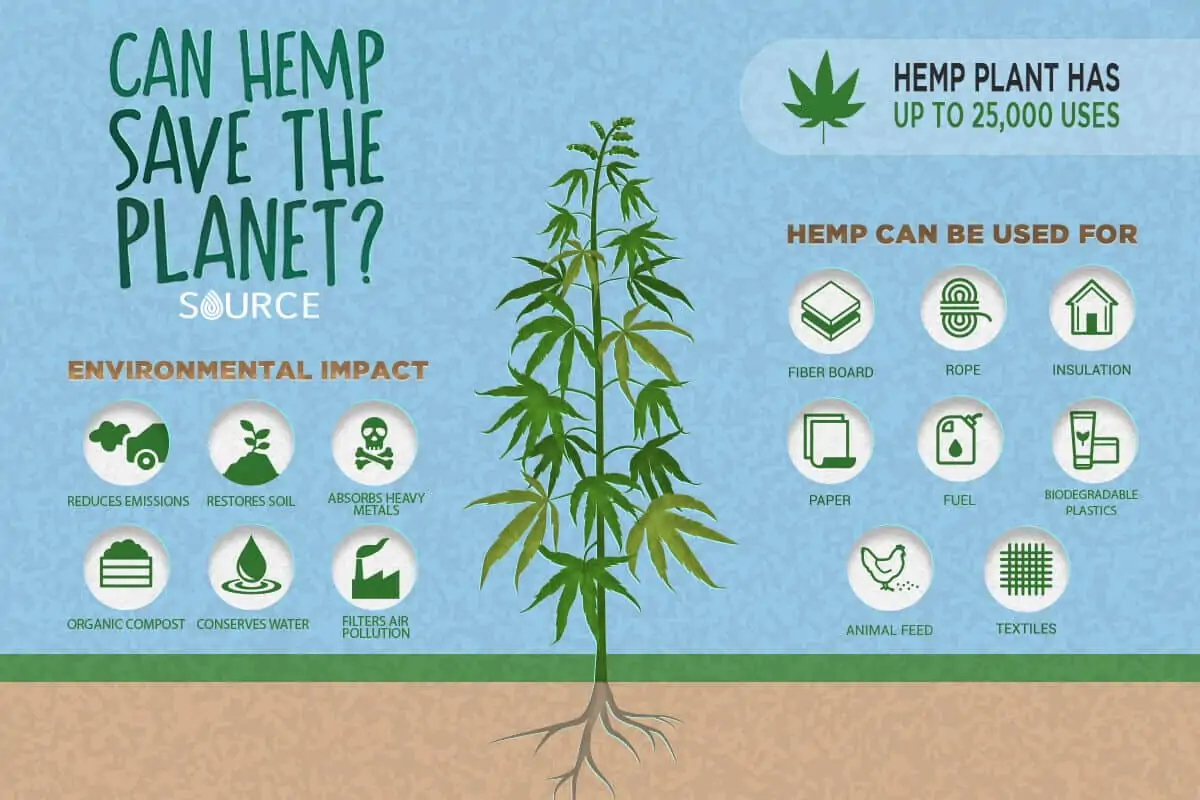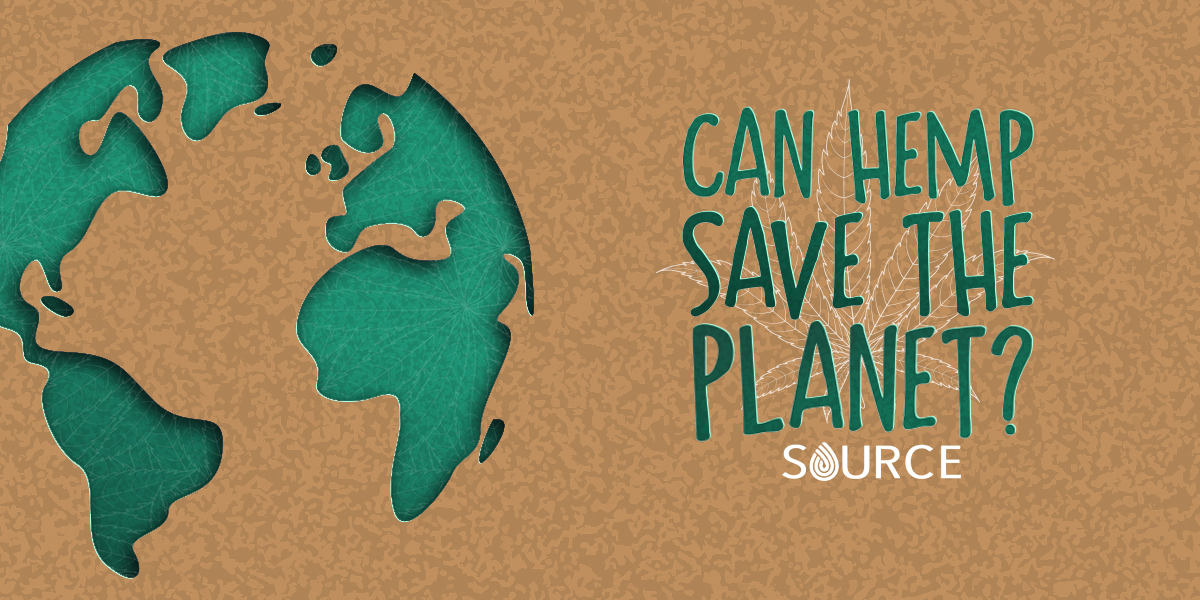CBD Oil News
Hemp Uses: Can One Plant Heal the Planet?
Happy Earth Day everyone! As we all work together to combat the scourge that is Covid-19, we can’t forget about how our actions, even at home, can help the planet.
And while there is evidence that the Earth may be healing as we’re all shut indoors, that doesn’t mean our responsibility ends. Eventually we’ll all be back out there, doing our thing.
For us, healing the planet always bring to mind the many hemp uses there are – after all, that’s our every day. So, what exactly are those uses? Can hemp truly heal the planet?
Healing Hemp Uses
Hemp is one of the world’s oldest crops. It also happens to be one of the most versatile. We may rely on it for our CBD, but that’s not all it’s good for.
Not by a long shot.
In the U.S., hemp was first planted in Jamestown, Virginia. It was considered so essential that farmers were actually required to devote a portion of their land to it. It was used in everything from ship sails to the covers of pioneer wagons. Even the Declaration of Independence was drafted on hemp paper!
Today, the uses have expanded. Here are some of the many hemp uses:
- Fiber board
- Rope
- Insulation
- Medicine
- Clothing
- Paper
- Food
- Biofuel
- Biodegradable plastic
⭐ Did you know that, when the U.S. entered World War II, hemp was illegal? However, it was considered an essential resource, and so the government made it legal and encouraged farmers to plant it. They even made a promotional video about it. Watch the video here!
You may have noticed that many of the items on the list are usually made with other materials. We’re cutting down trees by the millions to make paper. We’re filling our landfills with plastic water bottles that take 450 years to break down. Materials used to make clothing and rope, like cotton, require vast amounts of water and the use of pesticides…
So, can turning our mind to the versatility of this one plant and the many hemp uses make that big a different on the environment?
How Hemp Can Heal the Planet
Here are some of the most important environmental impacts of hemp:
1. Hemp Reduces Carbon Emissions
We believe the best environmental quality of hemp is its impact on carbon emissions. Hemp pulls huge amounts of carbon dioxide out of the atmosphere.
Sure, most plants can do this as part of photosynthesis, but hemp really ups the ante. In fact, industrial hemp has been proven to absorb more CO2 per hectare than any forest or commercial crop.
One hectare of industrial hemp can absorb 22 tonnes of CO2 per hectare. And since farmers can actually grow 2 crops per year, absorption is doubled. This is more than trees or any other plants of a similar size. In fact, 1 acre of hemp is said to produce more oxygen than 25 acres of current forest.
Ya, we weren’t kidding about it upping the ante…
2. Hemp Restores the Soil
You’ve probably heard about crop rotation. This is the age-old practice of switching out crops to allow the soil to replenish and to avoid draining it of nutrients. The thing is, it may not always be the most economical practice. So, to keep costs low, modern farming relies on powerful artificial fertilizers to be able to grow the same thing year after year.
This doesn’t give the soil that much-needed break, and it means chemical fertilizers seeping into the soil…
Hemp is helping to solve both problems. Despite being an annual crop, hemp’s roots reach deep down into the soil, which helps to hold the soil together. This in turn reduces soil erosion. It also loosens up the soil to allow less hearty plants to grow afterward.
Hemp also produces high quantities of valuable biomass – the remaining organic material (stalks and leaves) left after the flowers and/or seeds have been harvested from the plant. Typically considered waste for other farming, hemp biomass returns to the soil and decomposes, feeding nutrients back into the ground, nourishing it for the future. It also absorbs toxins from the soil.
⭐ That biomass we mentioned – it can also be converted to biofuel in the form of clean-burning alcohol or no-sulphur man-made coal. Hemp has more potential as a clean and renewable energy source than any crop on Earth!
3. Hemp Prevents Deforestation
Before the turn of the 20th century, as much as 90% of the world’s paper was made of hemp. That meant all the bibles, maps, newspapers, even paper money.
Unfortunately, once people stopped growing hemp on a mass scale, there just wasn’t enough supply to meet demand and the world switched to paper made from trees. This has been a really bad move for the planet.
How bad? Anywhere between 3.5 billion and 7 billion trees are cut down per year around the world. Ya, that bad.
Trees grown to make paper take between 50 and 500 years to grow. Once you cut them down, you’re not getting anything from them for decades, at the very least. Hemp, on the other hand, takes as little as 100 days to grow to maturity. Yes, days. That’s a little over 3 months.
Really makes you wonder why we stopped, doesn’t it.

4. Hemp Conserves Water
Our planet is made up of almost 70% water. On the surface, that may make you think, so why do we need to worry about it. Well, out of that 70%, only 0.03% is made up of fresh water. And so, to keep our water supply clean while protecting the environment, we need to do everything we can to conserve it.
Chew on this: it can take more than 5,000 gallons of water to produce 2.2 pounds of cotton. Cotton is used for tons of stuff, and it’s one of the most water-dependent crops in the world. And it’s quickly depleting our limited freshwater sources.
Considering the fact that cotton and hemp are comparable in what they can be used for, it’s worth noting that a U.K. study comparing cotton production to hemp production found that it only takes approximately 634-898 gallons of water to produce 2.2 pounds of hemp.
As you can see, hemp can be grown with minimal water.
As an added bonus for farmers, because of hemp’s minimal water requirement, it’s one of the most drought-tolerant crops on the planet!
5. Reduces Pesticide Use
We get it – pests can put a damper on profits. And weeds, well, they can be a problem too. That’s why modern farming relies heavily on pesticides to keep these pests out of fields.
Unfortunately, those chemical compounds then leak into the air, the soil, and the water supply. The dangers of pesticides are now fairly common knowledge. There’s overwhelming evidence that pesticides pose a potential risk to humans, wildlife, and the environment.
I bet you can guess where this is headed…
Hemp naturally repels weeds and has few insect enemies. Few insect enemies and no weed problems means hemp requires no herbicides and few or no pesticides! Compare it again to cotton, which has enormous pesticide use – 50% of all pesticides used in the U.S. are used on cotton – and you can see how big a deal that is.
Hemp Uses: Final Thoughts
As we move towards further regulation and a (fingers crossed) total end to the prohibition of growing hemp, we’re moving in the right direction for the planet. There are so many different ways we can switch out other materials in exchange for this much more eco-friendly, sustainable plant. Encouraging others to learn about the many hemp uses and promoting it as an alternative can only lead to more positive impacts on the environment in the future!

